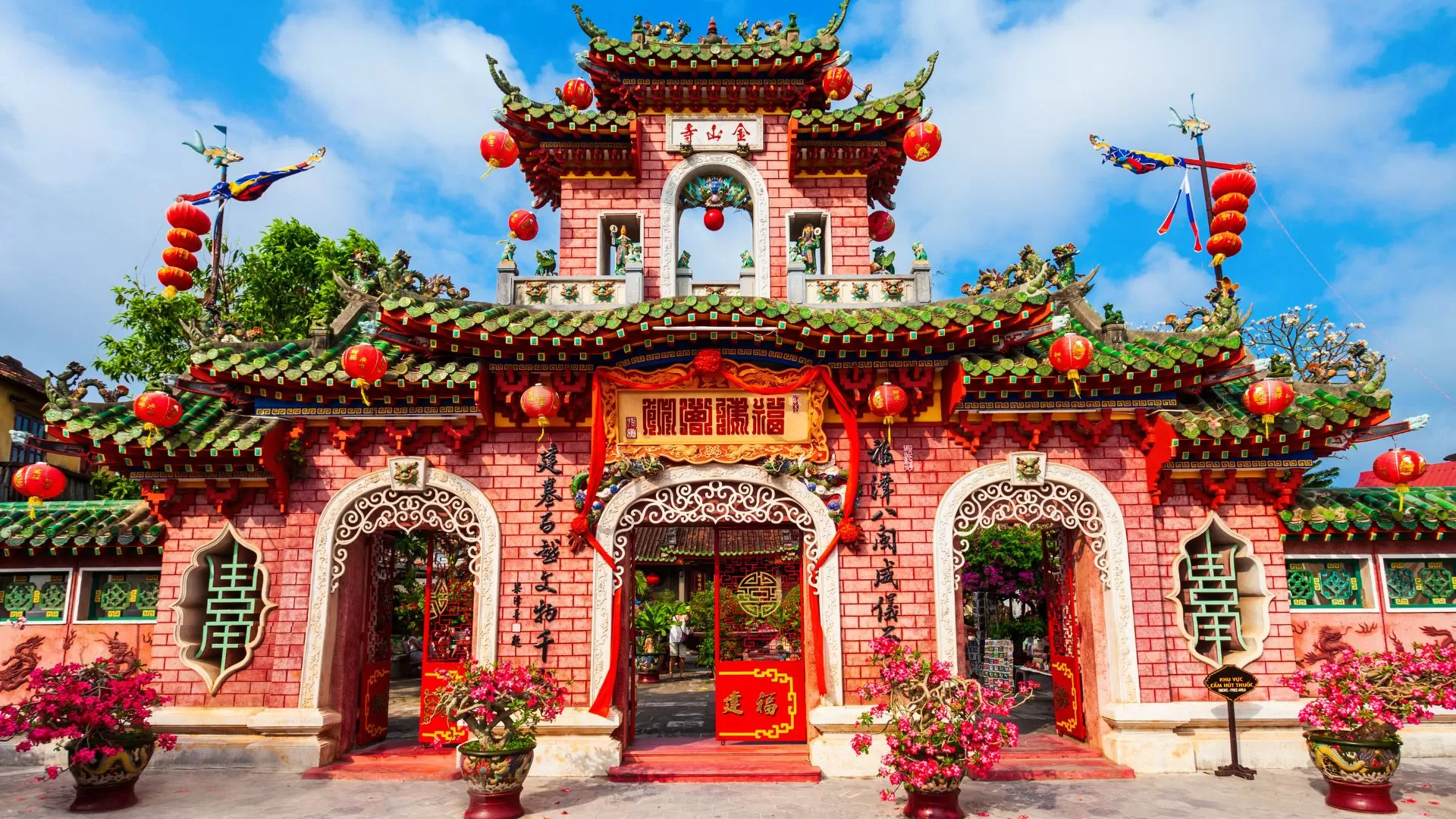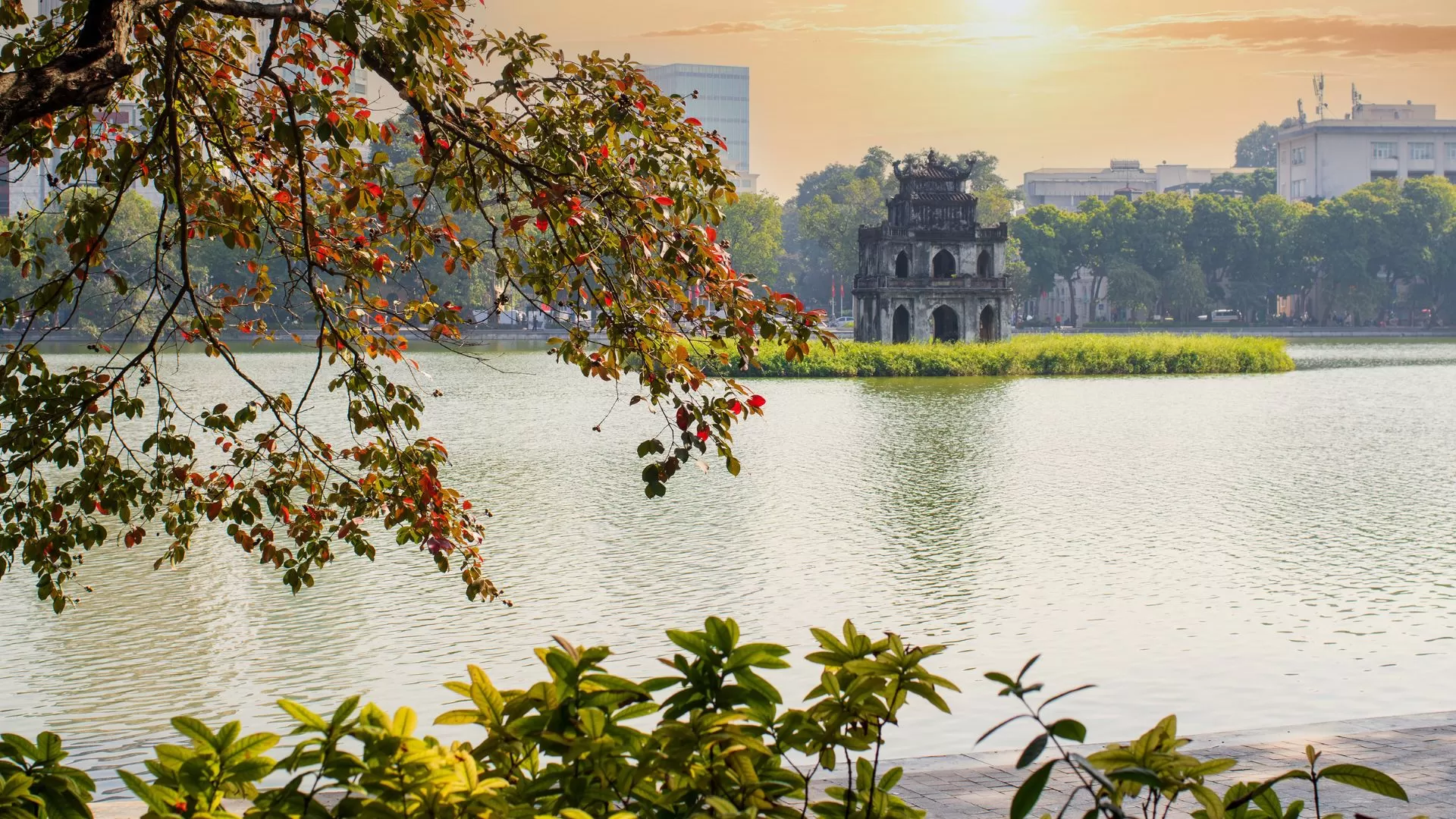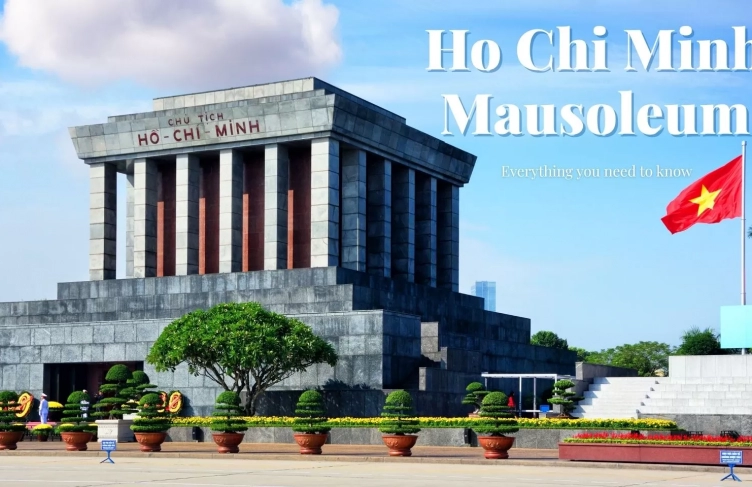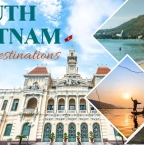
Hoi An travel guide: Must-see destinations to explore
Step into the lantern-lit beauty of central Vietnam with this detailed Hoi An travel guide. Explore ancient streets, taste authentic cuisine, and uncover the cultural heritage that makes Hoi An a truly unforgettable destination for every curious traveler.

Hoi An is a captivating town where ancient streets, golden walls, and glowing lanterns create a timeless atmosphere that lingers in every traveler’s memory. Steeped in history and culture, this destination invites you to slow down, explore, and connect with Vietnam’s rich heritage. In this Hoi An travel guide, you’ll find everything you need to make the most of your journey—from local insights to must-see experiences that reveal the town’s true spirit.
For a seamless and unforgettable adventure, let Hanoi Voyages craft your personalized itinerary, turning your visit to Hoi An into a meaningful travel story worth telling.
Table of Contents
The ideal time to visit Hoi An

When planning your trip with this Hoi An travel guide, timing plays a crucial role in ensuring the best experience. The ideal time to visit Hoi An is from February to April, when the weather is dry, sunny, and comfortably cool. Average temperatures during this period range from 22°C to 28°C, making it perfect for outdoor activities and sightseeing. You'll also avoid the intense summer heat and the heavy rains of the later months, allowing for a more relaxed and enjoyable journey.
Hoi An travel guide: How to get there and get around
One of the most important parts of planning your journey is knowing how to get to Hoi An and move around with ease. In this section of our Hoi An travel guide, you'll find everything you need to navigate your way to and within Hoi An in Vietnam.
Best ways to get to Hoi An
By plane
The quickest way to get to Hoi An is by flying to Da Nang International Airport (DAD), the nearest major airport. Direct flights are available from Hanoi and Ho Chi Minh City, with a flight time of about one hour. Ticket prices typically range around $100 for a one-way trip, depending on the airline and season.
Once you arrive at Da Nang Airport, Hoi An is about 30 kilometers away, and you can take a taxi or a bus, with a total travel time of about 45 minutes.
By train
For a more scenic journey, take a train from Hanoi or Ho Chi Minh City to Da Nang Railway Station or Tra Kieu Station (closer to Hoi An). The trip lasts between 15 - 20 hours, with ticket prices ranging from $20 to $50, depending on the seat class. Train journeys along Vietnam’s coastline provide beautiful views and a chance to experience local travel. From Da Nang, a taxi or bus will take you to Hoi An.
By bus
Buses are an economical way to reach Hoi An from major cities. Several companies operate routes with direct buses from Hanoi and Ho Chi Minh City. Ticket prices range from $13 - $20, with some stops for meals and rest breaks. The journey can be long, but modern sleeper buses offer reclining seats, air conditioning, and blankets for comfort.
Convenient ways to get around Hoi An

Bicycle: Cycling is one of the best ways to enjoy Hoi An’s peaceful vibe. You can easily ride through the Ancient Town, along quiet riverside paths, or out to places like Tra Que Village and An Bang Beach. Many hotels offer free bikes, or you can rent one for around 40,000 VND per day.
Motorbike: If you plan to visit places a bit farther out, renting a motorbike is a smart choice. It's affordable (120,000–150,000 VND/day) and gives you more control over your schedule. Just be sure you’re comfortable riding in Vietnam’s traffic.
Cyclo: Riding a cyclo through the Ancient Town is a unique way to see the sights slowly and enjoyably. With fares around 150,000 VND per hour, it’s a relaxing, old-school option for sightseeing.
Taxi: Taxis are a practical choice if you're traveling to and from the airport, or simply need comfort. You can book through hotel reception or use ride-hailing apps like Grab for transparent pricing and convenience. It's a good option if you're traveling in a group or carrying luggage.
Top 7 must-see destinations in Hoi An
To help you make the most of your journey, this Hoi An travel guide highlights the top 7 places that truly capture the spirit of the region. Each location offers something special, making it a must-see destination in Hoi An for any traveler.
Hoi An Ancient Town

No Hoi An travel guide would be complete without a visit to the iconic Ancient Town. With its winding lanes, yellow-washed walls, and traditional shophouses, this UNESCO World Heritage Site is the heart and soul of Hoi An. As one of the most recognized cultural sites in Vietnam, it offers a glimpse into the town’s historical role as a trading port. Whether you're strolling through lantern-lit streets or sipping coffee by the river, this is undoubtedly a must-see destination in Hoi An.
Japanese Covered Bridge

An essential stop in any Hoi An travel guide, the Japanese Covered Bridge stands as a symbol of the town's multicultural past. The Japanese Bridge, an iconic symbol of Hoi An, dates back to the 16th century. Built to connect the Japanese quarter with the Chinese and Vietnamese merchant quarter, it bears witness to the city's historical openness to international trade. This covered bridge, remarkable for its original architecture, is decorated with intricate carvings depicting animals and traditional motifs. Crossing this bridge offers a picturesque view of the Thu Bon River, which is particularly magical at sunset.
Fujian Assembly Hall

Among the many heritage sites featured in this Hoi An travel guide, the Fujian Assembly Hall (Phuc Kien) stands out as a masterpiece of architecture and spiritual significance. Built in the 17th century by traders from Fujian Province in China, this place of worship and gathering embodies the cultural richness of the Chinese community living in Vietnam.
📍 Address: 46 Tran Phu Street, Hoi An Ancient Town, Quang Nam Province, Vietnam.
🕗 Opening hours: Every day from 7:00 AM to 5:00 PM.
🎟️ Entrance fee: 150,000 VND (~$5.78)
Tan Ky Old House

As one of the most well-preserved merchant houses in Hoi An, Tan Ky is often included in detailed Hoi An travel guides. Built over 200 years ago, the house features a harmonious blend of Vietnamese, Chinese, and Japanese design. Walking through its wooden halls gives you a personal connection to the town’s commercial past. It’s a quiet, meaningful stop that adds depth to your understanding of Hoi An’s unique history.
An Bang Beach

While this Hoi An travel guide focuses on culture and heritage, it wouldn’t be complete without a mention of An Bang Beach. Just a short ride from town, the beach is known for its clean white sand and calm waters. It’s a perfect place to unwind, enjoy fresh seafood, and watch the sunset. Though relaxed in vibe, An Bang is a top must-see destination in Hoi An for those seeking a mix of nature and leisure
Tra Que Vegetable Village
Just a short bicycle ride from the ancient town, Tra Que Vegetable Village offers a tranquil escape and a chance to immerse yourself in rural Vietnamese life. This is one of the most authentic must-see destinations in Hoi An, especially for those interested in sustainable agriculture and local traditions. Here, you can join farming activities, learn how to grow herbs the traditional way, and even participate in a cooking class using fresh ingredients straight from the garden. This enriching experience is often highlighted in eco-focused Hoi An travel guides.
Cam Thanh Coconut Village

One of the most unique experiences in any Hoi An travel guide is a visit to Cam Thanh Coconut Village. Located just outside the ancient town, this eco-village is surrounded by nipa palm forests and crisscrossed by small canals. Visitors can enjoy a fun and scenic basket boat ride, watch boat-spinning shows and explore the peaceful natural setting. As a cultural and eco-tourism highlight, Cam Thanh is a must-see destination in Hoi An that offers a refreshing connection to the town’s rural life and environmental heritage.
If you're looking for a journey filled with authentic experiences to Hoi An — where wonderful landscapes meet rich cultural heritage — then the tours designed by Hanoi Voyages are the perfect way to begin your adventure. Hanoi Voyages proudly offers exciting and captivating tours to Vietnam:
 |
Vietnam tour 15 days beach extension Vietnam tour 15 days, featuring a relaxing beach extension in Phu Quoc. Discover vibrant culture, stunning landscapes, and serene shores |
 |
Vietnam tour 18 days with Sapa and Phu Quoc Explore the authentic beauty of northern Vietnam and unwind on the beaches of Phu Quoc in the south |
 |
Vietnam tour 21 days Absolutely from Hanoi to Phu Quoc island Vietnam tour 21 days, from the peaceful North to the bustling South. This classic tour highlights the country's beautiful and rich cultural |
What to eat in Hoi An?
Hoi An not only captivates with the beauty of its architecture or the peaceful atmosphere of its alleys, but also with its culinary richness, a true reflection of the cultural diversity of central Vietnam. Whether on the street, at the market or in a refined restaurant, local gastronomy is an unmissable experience.
Top Hoi An's iconic specialties

Cao lau Hoi An – Hoi An rice noodles: This iconic Hoi An dish consists of thick noodles, slices of caramelized pork, fresh vegetables, aromatic herbs, and crispy croutons. What makes it unique is the texture of the noodles, prepared with traditional well water.
Banh bao – Banh vac: Often called "white roses" these steamed dumplings are stuffed with shrimp or pork and then garnished with small fried onions. Delicate and fragrant, they are served with a light fish sauce.
Com ga (chicken rice): Simple and tasty, this dish combines fragrant rice, tender sliced chicken, fresh herbs, pickled onions and sweet and sour sauce.
Banh xeo – Vietnamese crepe from Hoi An: Crispy rice crepe filled with shrimp, pork and bean sprouts, eaten rolled in rice paper with herbs and dipped in a special sauce.
For more delicious Hoi An food, you can explore through our blog: Explore Hoi An cuisine: 9 best local dishes
How many days to spend in Hoi An?
To fully enjoy Hoi An and its surroundings, it is recommended to plan at least 3 days, which allows you to discover the old town, the beaches, the craft villages and the cultural sites without rushing.
1 to 2 days : Perfect for a first discovery of the old town, strolling through its picturesque streets, visiting historical monuments and savoring local flavors.
3 days : Ideal for exploring Hoi An in depth: in addition to the old town, enjoy the beaches of Cua Đai or An Bang, visit the craft villages and go on an excursion to the sacred site of My Son.
4+ days : For a complete immersion, add craft workshops, cooking classes, bike rides in the surrounding countryside, and a basket boat ride in the Cam Thanh coconut forest.
For more details about this tour, you can read: Hoi An in 3 days: Things to do and travel tips
Practical advice before visiting to Hoi An
To ensure you have the best experience possible during your trip to Hoi An, take note of these essential and practical tips:
Dress appropriately: When visiting temples and historical sites, wear modest clothing.
Bring cash: Some local shops and street vendors only accept cash. ATMs are available, but it’s best to have some cash on hand.
Plan your itinerary around the weather: The best time to explore outdoor activities is early morning or late afternoon to avoid the midday heat.
Book accommodation and tours in advance: Popular hotels and excursions can fill up quickly, especially during peak travel seasons.
Be mindful of traffic rules: If renting a motorbike, always wear a helmet and follow local road regulations.
Respect local customs: When visiting villages, be polite and ask permission before taking photos of locals.
With its rich cultural heritage, scenic beauty, and warm hospitality, Hoi An continues to capture the hearts of travelers worldwide. Whether you’re a history lover, a foodie, or simply searching for a peaceful getaway, this Hoi An travel guide is your perfect starting point. For a seamless and personalized journey, let Hanoi Voyages craft your ideal itinerary—filled with unforgettable moments and the best of what Hoi An has to offer.
Dream about your trip to Asia, in private
We are here to make it happen with youFREE QUOTE, WITHOUT OBLIGATION
































